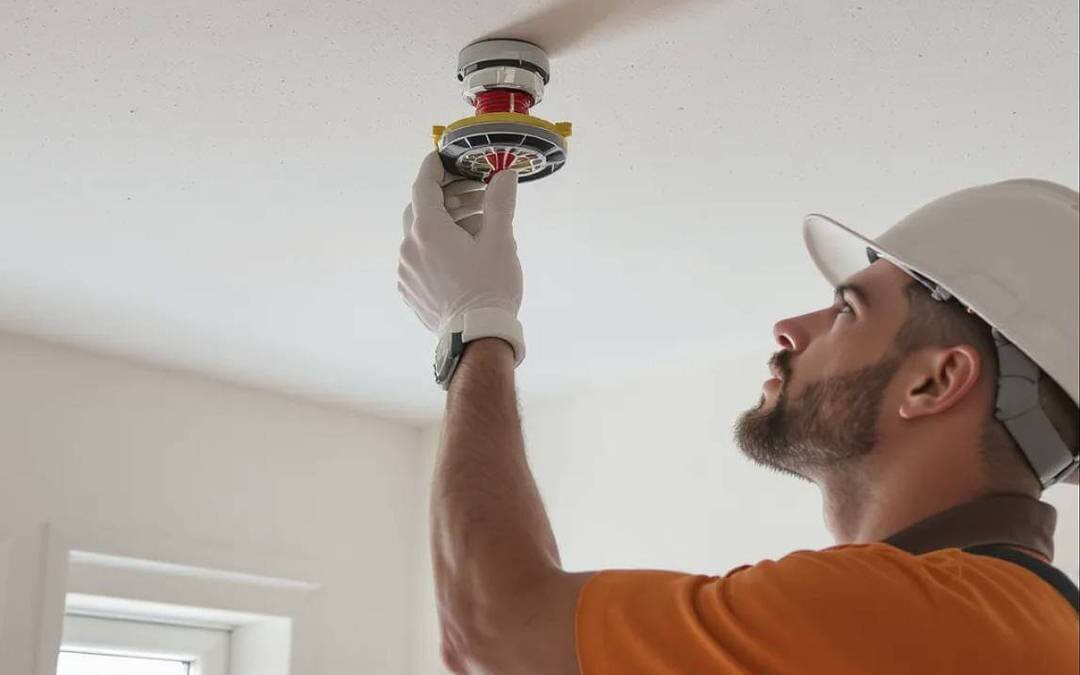Introduction
Fire sprinkler systems are one of the most reliable and effective defenses against fire emergencies in both residential and domestic settings. Yet, like any mechanical system, they require consistent care to ensure they function properly when needed most. Neglecting fire sprinkler maintenance can lead to system failures, non-compliance with safety regulations, and increased risk to life and property.
Whether you’re a homeowner looking to protect your family, a property manager responsible for a large building, or a fire safety professional tasked with maintaining compliance, understanding the best practices for fire protection system upkeep is critical. In this guide, we’ll break down practical sprinkler servicing tips, highlight common mistakes to avoid, and share actionable strategies to help you maintain your system effectively.
A fire sprinkler system is only as good as the maintenance program behind it. Regular inspections save lives and property.
Understanding Fire Sprinkler System Components
Before diving into maintenance best practices, it’s essential to understand the core components of a fire sprinkler system. These include the water supply, control valves, sprinkler heads, piping, alarms, and monitoring devices. Each part plays a role in ensuring quick and effective fire suppression.
See our Water Sprinkler Systems
Regular inspections should assess the condition of each component. For example, a corroded pipe can reduce water pressure, while a blocked sprinkler head can prevent water distribution in a fire.
Here are some common inspection points:
Component | Inspection Focus | Recommended Frequency |
|---|---|---|
| Sprinkler heads | Check for dust, paint, or damage | Quarterly |
| Control valves | Ensure they are open and sealed | Monthly |
| Pipes | Check for leaks or corrosion | Annually |
| Alarm systems | Test for proper operation | Semi-annually |
As you can see, maintenance isn’t a one-size-fits-all task; different components require attention at different intervals.
Routine Inspection and Testing Procedures
Routine inspections are the backbone of fire protection system upkeep. The NFPA recommends professional inspections at least once a year, but many facilities opt for more frequent checks to ensure compliance and safety.
Key steps in routine inspection include:
- Visual checks – Look for leaks, corrosion, missing caps, or physical damage to sprinkler heads.
- Valve testing – Confirm that control valves are fully open and properly sealed.
- Flow tests – Simulate fire conditions to ensure adequate water flow.
- Alarm testing – Verify that alarms activate properly when triggered.
Preventative maintenance is significantly cheaper than the cost of repairing fire damage after a system failure.
By following a consistent inspection schedule, you not only comply with regulations but also extend the lifespan of your system.
Cleaning and Environmental Considerations
Dust, paint overspray, and even cobwebs can impair a sprinkler head’s ability to activate during a fire. Regular cleaning is a simple yet crucial part of sprinkler servicing.
Environmental factors also play a role. For example, in coastal areas, salt in the air can accelerate corrosion, requiring more frequent checks. In industrial environments, airborne particles can clog components.
To address these issues:
- Gently clean sprinkler heads with a soft cloth.
- Avoid painting over or obstructing sprinklers.
- Control environmental hazards where possible, such as installing filters in dusty areas.
Common Mistakes in Fire Sprinkler Maintenance
Even well-intentioned maintenance programs can fail if common mistakes go unaddressed. These include:
- Ignoring small leaks: Minor leaks can indicate bigger problems in the system.
- Skipping inspections: Even if the system hasn’t been activated, wear and tear still occur.
- Untrained personnel: Only trained technicians should perform certain tests to avoid accidental system activation.
Mistake | Potential Consequence | Prevention |
|---|---|---|
| Skipping inspections | System failure during fire | Follow NFPA schedule |
| Painting over heads | Blocked activation | Educate maintenance staff |
| Untrained testing | Accidental water damage | Hire certified professionals |
Addressing these pitfalls is critical for ensuring your system works when it matters.
Compliance and Record Keeping
Maintaining a fire sprinkler system isn’t just about physical upkeep; it’s also about documentation. Regulatory bodies require proof of inspections, tests, and repairs.
Effective record keeping should include:
- Dates and results of inspections
- Details of any repairs or replacements
- Names and certifications of technicians
- Notes on environmental conditions affecting the system
Good documentation can protect you from liability and demonstrate compliance during audits.
Advanced Considerations and Future Trends
Technology is changing how we approach fire sprinkler maintenance. Smart sensors can now monitor system pressure, detect leaks, and send alerts in real time. Predictive analytics can identify potential failures before they occur.
Industry trends also point toward more integrated fire protection systems that combine sprinklers with smoke detection and building automation.
Investing in these technologies can enhance reliability and reduce long-term maintenance costs.
Tools, Resources, and Implementation Tips
For property managers and safety officers, implementing a robust maintenance program involves:
- Partnering with certified fire protection service providers
- Using digital maintenance management tools
- Training in-house staff on basic inspection and reporting
Recommended resources include the NFPA 25 Standard for the Inspection, Testing, and Maintenance of Water-Based Fire Protection Systems, and local fire department guidelines.
Conclusion
Fire sprinkler maintenance is a critical component of overall fire safety strategy. By understanding system components, following routine inspection schedules, avoiding common mistakes, and embracing new technologies, you can ensure your fire protection system is always ready to respond.
The stakes are high—lives, property, and compliance all depend on your commitment to proper upkeep. Start by reviewing your current maintenance plan, scheduling necessary inspections, and ensuring all records are up to date.
Remember, the best time to prepare for a fire is before it happens. A well-maintained sprinkler system is one of the most effective tools you have to protect what matters most.
See our Fire Sprinkler Servicing page.
Please contact our helpful Service Team either by email [email protected] or call us today on 0800 028 9911

